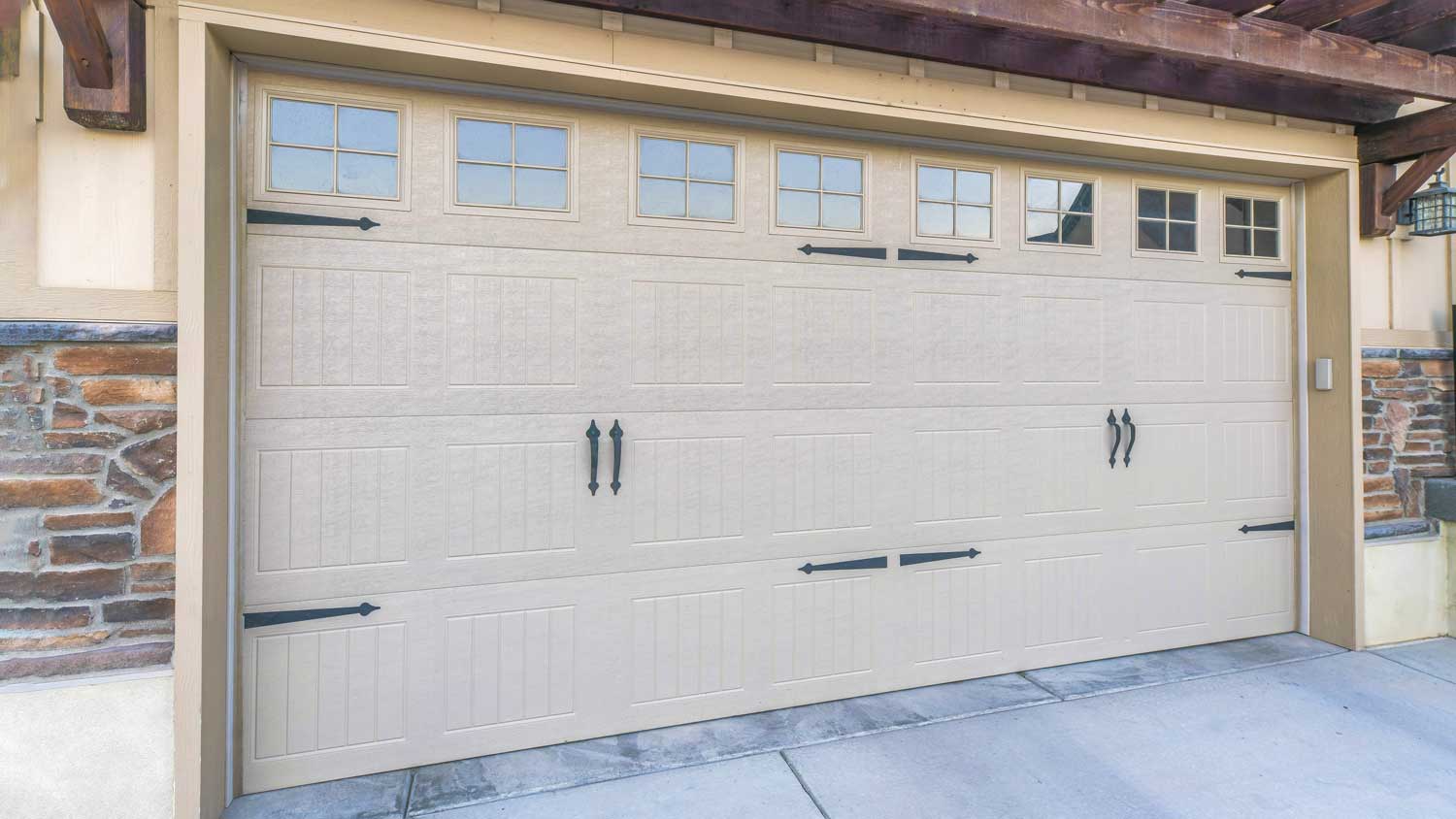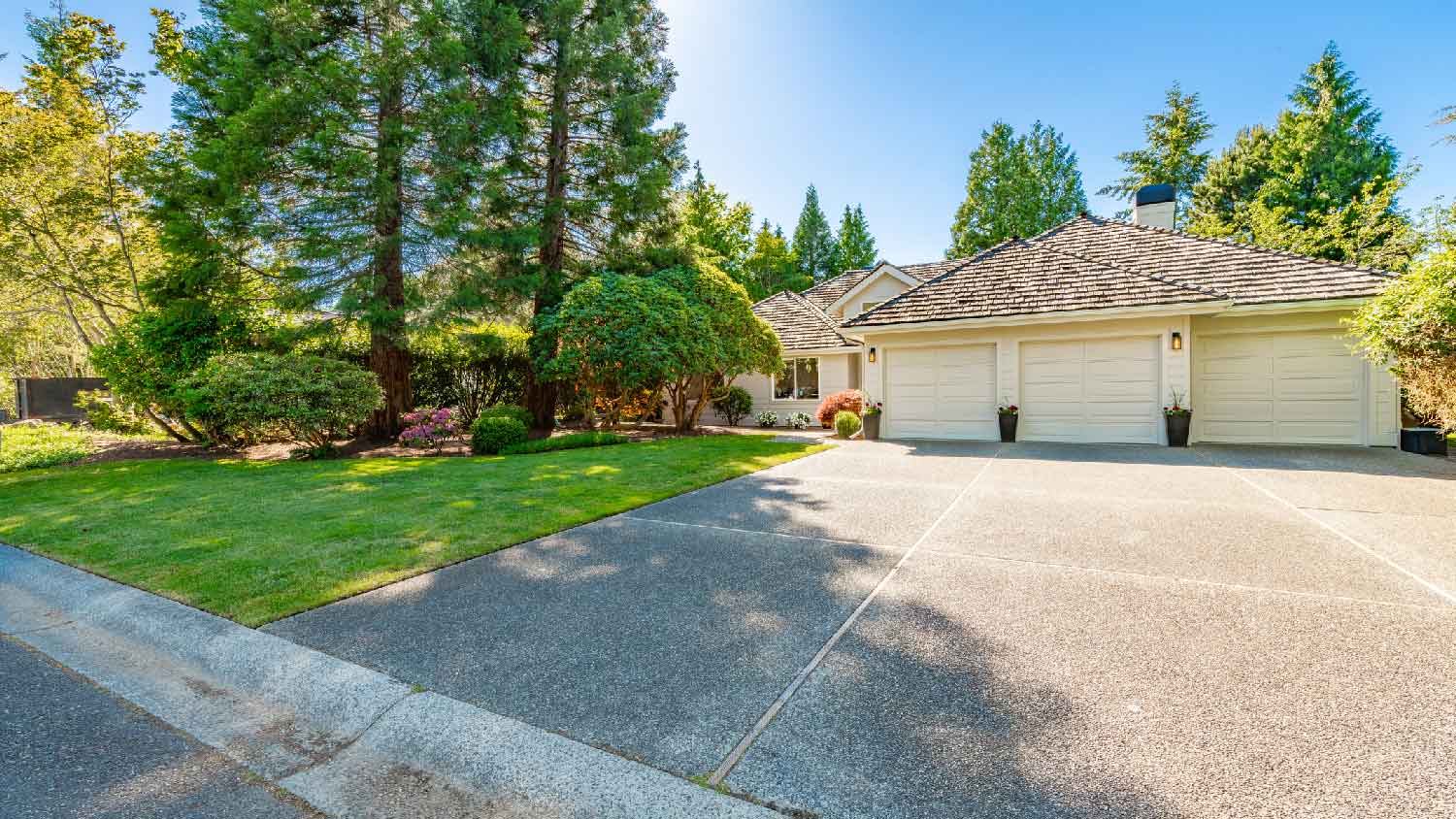Are Dog Doors on Your Garage Door Safe?
Keep your dog and home safe by steering clear of installing a dog door on your garage door


If you have a secure, pet-friendly outdoor space, installing a pet door can offer your dog or cat more freedom to come and go as they please. Dog doors provide access to fresh air, additional enrichment, and appropriate potty spots.
But dog doors aren’t suitable for every dog or home, and you can't install them on all door types. Learn more about why installing dog doors on most garage doors isn’t always the safest way to give your pet the freedom to come in and out as they please.
Why Installing a Dog Door on a Garage Door Isn’t a Good Idea
If you decide that a pet door would benefit your dog and family, installation should always be on a regular door. Adding one to most types of garage doors is impractical and, worse, potentially unsafe.
Garage doors that tilt up—especially those that can trigger remotely—pose a significant risk to your dog. If the door rolls up without you expecting it to, or you’re unaware your dog is using the door when you open it, your pup could get rolled up, potentially resulting in a serious injury or even a fatality.
If you have a side-hinged garage door that more closely resembles outward opening double barn doors, then dog door installation won’t be such a risky prospect. However, it can be more challenging to fit a dog door to garage doors’ metal materials, and you’ll need to smooth or seal any sharp edges to prevent the risk of injury. In these instances, hiring a handyperson to help with pet door installation could be better.
The other issue with garage doors is that they often open into the front yard onto a driveway, and that means your dog typically won’t have access to a secured area. All of these factors make other doors a much better location for your pet door.

The Pros and Cons of Dog Doors
Now that you know where you shouldn’t install a pet door, find out if choosing one is a good option for your pet and home.
Pros of Dog Doors
If you have a dog that enjoys the stimulation and fresh air they get in the backyard, you might want to install a dog door. It offers pets the opportunity to head outside (and come back in) whenever they want, and it’s great if you have a dog that’s always howling at the window or loves having space for zoomies. Or maybe you have a puppy or senior dog that needs to go potty more frequently.
It can also be convenient for owners. While a dog door isn’t an excuse to leave your dog home alone unsupervised for long periods or forgo daily walks, if you work from home or you’re busy with kids, knowing your pup can head outside when they choose can be a comfort and help.
Cons of Dog Doors
While you should never install a dog door on a garage door, it also might not be the right option for you and your pet. Some disadvantages of dog doors include:
Depending on the size and style, pet doors can present a security risk, as stray or wild animals could enter your home
If your yard isn’t secure, someone could steal your dog, or your dog could escape
Lengthy periods unsupervised in a garden or yard could increase the chance of injury or ingesting something problematic
The lack of supervision can also encourage barking, digging, or even behavioral issues like anxiety, reactivity, or over-arousal
Pets are at risk in areas where predators can access the garden or yard
Kids can get stuck in pet doors
Pet doors can damage door frames
Drafts can enter the home more easily
Tracking muddy paw prints through the home is inevitable
Adding a pet door may not be possible for renters


















